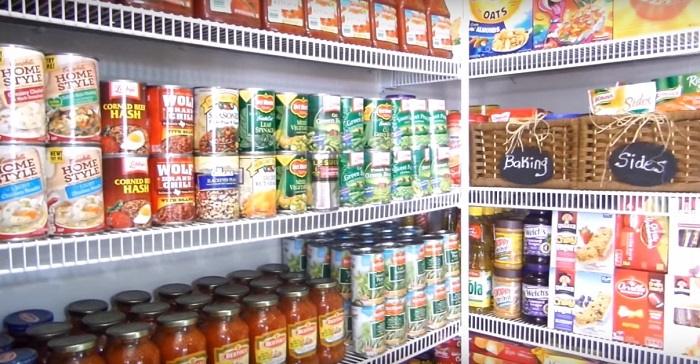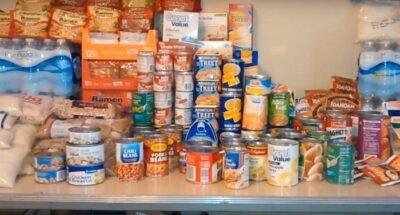A lot of us off-the-gridders don’t much believe anything the federal government says. That’s particularly true with statements like, “don’t worry, when Apple gives us their phone encryption key codes, we’ll protect your privacy.” Or, “we assure you that with this tax increase, we won’t increase spending.”
The federal government has a history of making promises it can’t or doesn’t want to keep. Unfortunately, even when it means well, we can’t rely on it. An example that illustrates this is the federal government’s recommendations about stockpiling food supplies in case of an emergency.
The Department of Homeland Security, on its website, recommends stockpiling [2] three days of non-perishable food. This is clearly insufficient, considering that Hurricane Katrina left thousands without food and water for five days.
The Quickest Way To Store A Month’s Worth Of Emergency Food! [3]
If you don’t like the Department of Homeland Security’s recommendation, then you can visit FEMA’s [4] website. It does better, recommending storage up to two weeks.
With a conventional disaster, such as an earthquake, tornado, wildfire, tsunami, hurricane or small-scale terrorist attack, a two-week supply of non-perishable food may be sufficient.
But serious survivalists have a broader range of concerns that could disable long-term or destroy society entirely. These concerns include natural mega-disasters, a major war or terrorism, and health epidemics.
Mega Disasters
In 1908, an asteroid slammed into a remote region of the Siberian forest and damaged an area over 750 square miles. Considering that scientists are aware of only a fraction of asteroids screaming through our solar system, such a threat is real. Or consider the fact that a solar storm in 1859 wiped out telegraphs – the most advanced technology of the day – and that if such a storm hit today, it could take down the power grid for weeks or months.
(Listen to Off The Grid Radio’s in-depth report on threats to the grid here [6].)
Terrorism
Most survivalists have their “favorite” doomsday scenario. I’m no different. I’m worried about electromagnetic pulse (EMP) weapons. An attack such as this, easily transported by today’s planes, drones or intercontinental missiles, could send our country back to the stone age. With an EMP attack, an electromagnetic shock is created that pulses through electronic items and renders them useless.
After 911, the federal government commissioned several studies on combatting feasible terrorist attacks, and ann EMP was one of them. Despite the relative possibility of this type of attack, little has been done to protect against it. Most of our military and power generation infrastructure, as well as virtually all commercial products like airplanes, cars, generators and computers, are vulnerable.
Protect Your Solar Generator And Electronics From An EMP! [7]
With a widespread EMP attack, millions would die of hunger, and those who have stored food would be relying on their stockpiles for a long time.
Health Epidemics
In the 1300s, the plague killed millions of people — roughly a third of the population of Europe. Imagine if a similar epidemic occurred today. National governments would respond quickly and aggressively. Travel would be shut down and quarantines established. You could find yourself in a zone abandoned by government help, an area where most of the population has fled. It could be a long time before society stabilized.
Start Stockpiling Now
It doesn’t really matter whether you’re concerned about relatively localized, short-term disasters like a tornado or flood, or a longer-term event that severely destabilizes society. What’s important is that we don’t know what the future holds, but history and today’s armed hostile nations indicate that a major disaster could happen any time.
So start getting prepared. You can begin by purchasing a year’s supply of non-perishable foods. However, the true art of survival and prepping is about sustainability — not just having stored food, but having a homestead that provides food for the future, such as a sustainable garden and small animals for meat. Whatever you do, don’t believe the feds. Three days is not enough!
What is your opinion on stockpiling? How long is enough? Share your thoughts in the section below:
Learn How To ‘Live Off The Land’ With Just Your Gun. Read More Here. [8]


